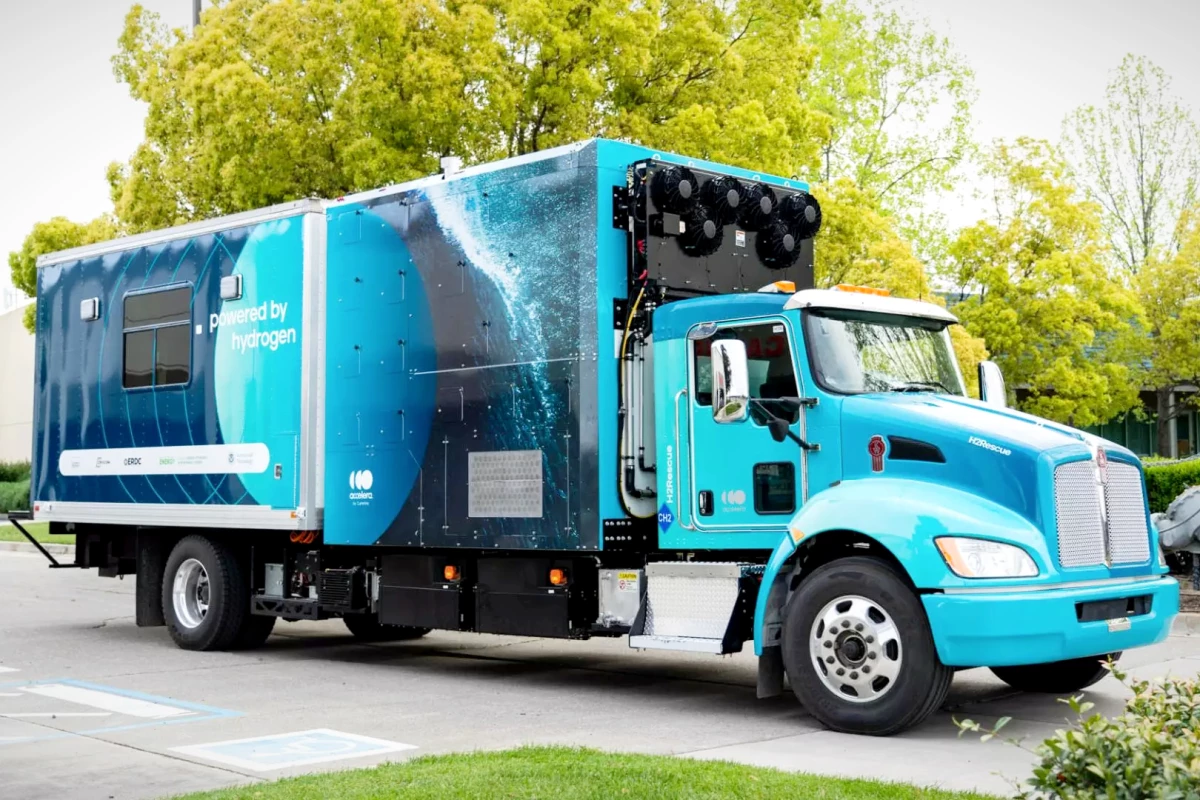Hydrogen-fueled trucks can keep thousands of tons of carbon out of the air every year. A prototype rescue truck from the US Department of Energy shows just how viable the clean-burning haulers are becoming – by bagging a new world record.
The prototype truck, known as the H2Rescue truck, was built by clean-energy company, Cummins Accelera in cooperation with the US Department of Defense and the Department of Energy's (DOE) Hydrogen and Fuel Cell Technologies Office. For its record-breaking run, the truck journeyed 1,806 miles (2,906 km) on a single tank filled with 175 kg (386 lb) of hydrogen. An adjudicator from Guinness World Records was on hand to ensure that the truck's hydrogen tank was sealed before it made its trip.
"Powered by a Cummins Accelera fuel cell engine and a 250-kilowatt traction motor, the truck carried 175 kilograms of hydrogen and consumed 168 kilograms [370 lb] while navigating rush hour traffic, between 50 to 55 mph [80 to 89 km/h], on public roads, operating in temperatures varying from 60 to 80 degrees Fahrenheit [16 ºC to 27 ºC]," said the DOE in a statement.
During the trip, the truck emitted nothing but water from its tailpipe, as is the case with all hydrogen-powered cars and trucks. According to the DOE, it saved 664 lb (301 kg) of CO2, which is the amount a gasoline-fueled truck of the same size would have released along the same distance.
The H2Rescue truck is designed to be dispatched to disaster zones and other areas where emergency responses need to be mounted. It can shunt 25kW of power from its fuel cells to provide electricity for emergency operations for 72 hours without needing to refuel. That's enough to power 2025 FEMA trailers without the noise and exhaust created by traditional gasoline generators.
The vehicle, which weighs about 33,000 lb (14,969 kg), can also carry supplies to areas in need and produces about a gallon of water an hour (3.8 L) from its exhaust – not much help in a disaster zone, but definitely better than releasing polluting fumes instead.
The DOE says that swapping in H2Rescue trucks in place of traditional emergency response vehicles would save about 1,825 gallons (6,908 L) of gasoline per year and reduce greenhouse gas emissions by 2.5 metric tons (2.8 tons) annually.
You can get a closer look at the H2Rescue truck in the following video from Accelera.
Source: US Department of Energy





